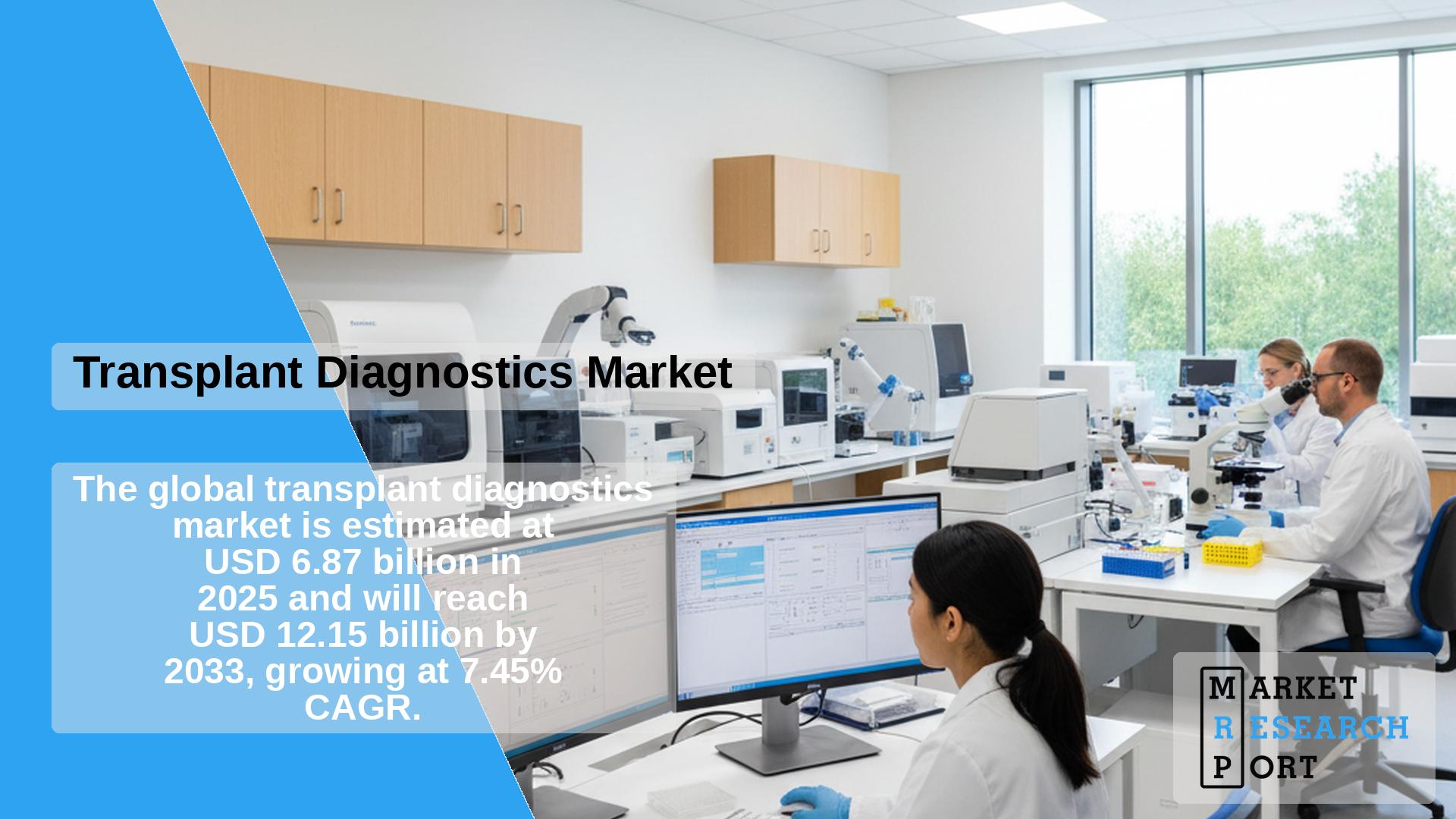
The global transplant diagnostics market was valued at approximately USD 6.84 billion in 2025 and is expected to grow to USD 12.15 billion by 2033, reflecting a compound annual growth rate (CAGR) of 7.45% during 2025-2033. Market growth is propelled by the increasing prevalence of genetic disorders, advancements in genetic testing technologies, and heightened adoption of personalized medicine.
Aging populations and the increasing prevalence of chronic diseases drive the demand for organ transplantation and advanced transplant diagnostics. For example, WHO data projects that by 2050, the global population over 60 will nearly double, escalating the need for transplant procedures. Technological advances such as 3D bioprinting, robotic surgery, and AI-powered diagnostics enhance compatibility evaluation, reduce rejection risk, and improve patient outcomes.
A notable innovation is enzyme technology enabling conversion of donor organs to universal blood types, minimizing hyperacute rejection. Additionally, AI-integrated platforms combining donor-derived cell-free DNA analyses with traditional tests are revolutionizing personalized rejection risk assessment, as demonstrated by CareDx’s AlloSure Plus.
Molecular assays led the market, leveraged for their precision and sensitivity in diagnosing graft rejection and donor-recipient compatibility. Technologies include PCR-based assays, next-generation sequencing, and real-time PCR, providing rapid, scalable, and clinically valuable diagnostics.
Sequencing-based molecular assays are projected to grow fastest due to enhanced accuracy and sensitivity demands in transplant diagnostics.
Reagents and consumables dominated the product segment, underscoring consistent demand for essential materials in pre- and post-transplant testing workflows. Growing transplant procedures and adoption of high-throughput platforms fuel this segment’s expansion.
Software and services are the fastest-growing segment, driven by innovative platforms featuring AI and machine learning for more efficient, sensitive, and non-invasive graft monitoring.
Diagnostic applications dominate transplant diagnostics, facilitating compatibility evaluation, infectious disease screening, and blood profiling. Meanwhile, research applications are rising, supported by advances in genomics and biomarker discovery, enhancing transplant science and personalized therapies.
Solid organ transplantation, including kidney, liver, heart, and lung, commanded the largest market share. Rising organ failure prevalence and organ donation programs intensify this trend. Stem cell transplantation shows rapid growth due to expanding clinical applications in regenerative medicine and immune therapies.
Hospitals and transplant centers are primary end users, supported by rising healthcare expenditure and specialized transplant infrastructure. Research and academic institutes are the fastest-growing segment, driven by increased focus on transplant science and government-backed modernization initiatives.
Dominates the transplant diagnostics market due to an advanced healthcare system, high R&D investment, and high organ transplant volumes, with over 46,000 transplants performed in the U.S. in 2024.
Experiences growth from substantial healthcare budgets, skilled surgeons, and advanced diagnostic technology adoption. The UK, Germany, and France are key contributors, supported by strong donor programs and research collaborations.
Fastest-growing market, stimulated by improving healthcare infrastructure, increased chronic diseases, and government initiatives. Countries like Japan, China, and India lead with investments in advanced diagnostics and precision medicine.
Emerging markets with rising awareness of genetic disorders and some healthcare infrastructure challenges, but growing investments provide opportunities for market expansion.
The report covers revenue forecasting, market ranking, competitive landscape, and growth factors from 2021 to 2033, segmented by test type, product category, application, transplant area, end-use, and geographic regions including North America, Europe, Asia Pacific, Latin America, and MEA.
What is the market size for transplant diagnostics?
Estimated at USD 6.84 billion in 2025, expected to reach USD 12.15 billion by 2033.
What is the forecast growth rate?
A CAGR of 7.45% from 2025 to 2033.
Which region leads the market?
North America, particularly the U.S., holds the largest revenue share as of 2024.
What test segment dominates the market?
Molecular assays, with 41.37% market share in 2024.
Who are the leading companies?
Thermo Fisher Scientific, Illumina, Roche, Abbott, QIAGEN, and others are key market players.